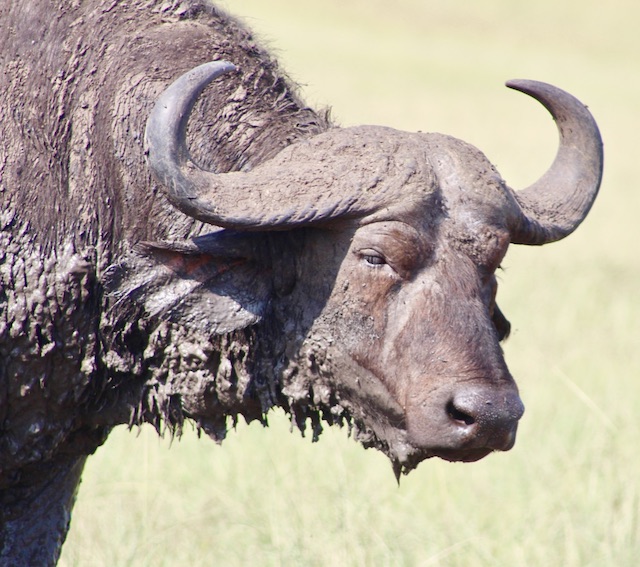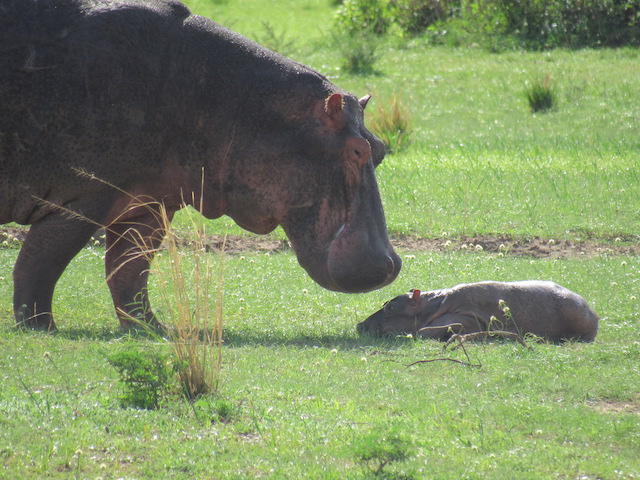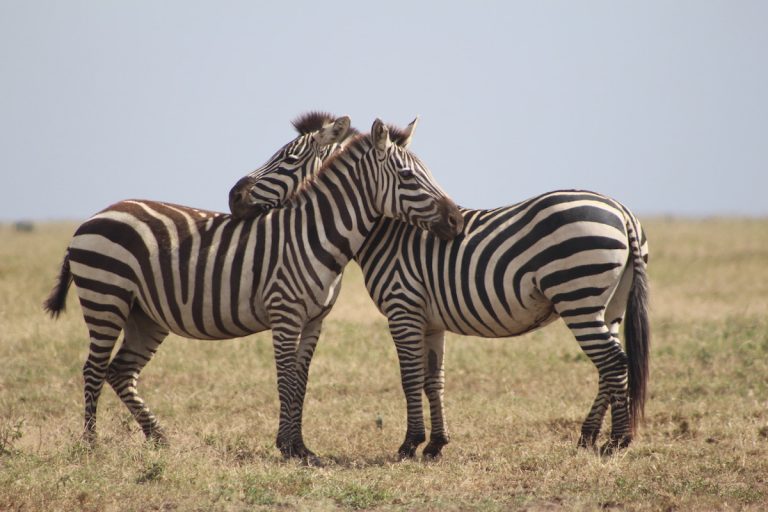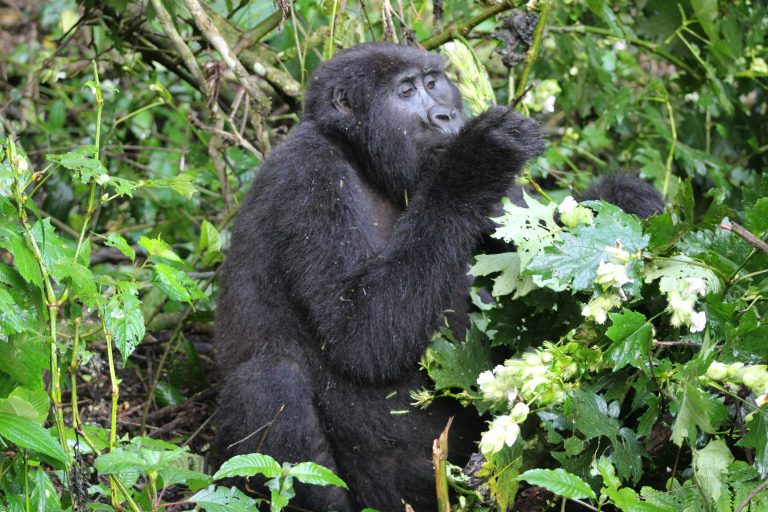Tsavo West national park is one of two parks that comprise the large Tsavo Conservation area, generally known as Tsavo National Park. The two parks are separated by a railway line and the Mombasa-Nairobi Road; thus, Tsavo East National Park and Tsavo West National Park. Tsavo West National Park was founded in 1948 alongside Tsavo East and encompasses an area of 9,065 square kilometers; it is quite smaller than its sister national park. The Park lies in the central province of southern Kenya and is managed by the Kenya Wildlife Service. Tsavo West was named after the majestic Tsavo River, which runs through the park and drains it. Known as one of the world’s biodiversity strongholds, the park’s terrain is dominated by savannah ecosystems such as open grasslands, scrublands, riverine, and acacia woods. Tsavo West National Park’s landscape also includes Mzima springs, Shetani lava flow, Lake Jipe, and Chaimu Volcano. Its spectacular scenery and a variety of wildlife make Tsavo West a popular safari destination in Kenya.
Attractions in Tsavo west National Park
Wildlife in Tsavo West National Park
Tsavo West National Park is known for its maneless “man devouring lions,” large-sized red elephants, and the last remaining population of Hirola antelopes in Kenya among several other wildlife species. Tsavo West is also a haven for all African large game, including the African big five; Lions, Elephants, Buffalo, Rhinos, and the elusive Leopard. More species such as Giraffes, Zebras, Cheetahs, Hyenas, Hippos, Crocodiles, Gerenuk, Lesser Kudu, Waterbucks, Wildebeests, and other big game can also be seen in the park. Moreover, the park boasts a large number of bird species, including rare birds such as the Corncrake, Basra reed warbler, secretary bird, and migratory birds, to mention but a few.
The most popular wild animals in Tsavo West National Park are the lions, which are popularly known as man-eaters. The park is home to large cat species such as leopards, cheetahs, and Genet cats. The great numbers of big cats offer visitors a high chance of spotting them during game viewing in the park.
Whereas Tsavo west National Park is home to both carnivores and herbivores, the herbivores dominate the park, accounting for almost 70 to 80 percent of the Tsavo West National Park animals. They include; Elephants, Buffaloes, Giraffes, Kobs, Gazelles, Rhinos, Zebras, Rhinos, Lesser Kudu, Topis, Wildebeests, Dik-dik, Elands, and many others. The carnivores in the park include lions, leopards, cheetahs, jackals, African wild dogs, hyenas, etc. The majority of visitors to African national parks come to see and interact with predators, particularly big cats and the African big five. Tsavo West National Park is home to all these species, making it a worthwhile Kenya safari destination that one shouldn’t miss.
Furthermore, Tsavo West is also home to large herds of hippos and crocodiles along the famed Tsavo River. More hippos can be found near the park’s artificially dug dam. During your wildlife drives, you can see hippos sunbathing beside crocodiles at the margins of the water pool. The Park also has a rhino sanctuary – the Ngulia Sanctuary is one of the unmissable sites where you may see endangered Black rhinos.
Birds in Tsavo West National Park
Tsavo West National Park has around 400 recorded bird species, including migratory bird species like the House Crow and rare bird species like Ortolan Bunting and Savi’s Warbler, among others. The different birdlife of Tsavo West National Park is dispersed across the park, with the greatest sites to observe the many bird species in the park being the savannah plains, Tsavo River area, acacia vegetation, and the Ngulia hills area. More bird species include; the thrush nightingale, Taita falcon, Taita fiscal, Somali Ostrich, Somali bunting, Somali bee-eater, Rufous chatterer, River warbler, Slender-tailed nightjar, Shelley’s starling, Red-billed parrot, Red-backed shrike, Narina trogon, Marsh warbler, Northern brownbul, Pangani long claw, to mention but a few.
Attractions in Tsavo West National Park
Mzima Springs
Tsavo’s Mzima Springs is home to fifty million gallons of pure water that flows underground from parched lava rocks. It’s a miraculous location with white crystal water gushing from underground. The springs are home to large schools of hippos and crocodiles. Mzima’s famously pure stream is formed by a natural filtering process and travels through a variety of pools and rapids. Rainwater percolates through the rock, where it may spend 25 years before emerging 50 kilometres distant at Mzima. About two kilometres downstream from the springs, the stream is blocked by solidified lava flow and disappears beneath the surface again.
The springs consist of four natural springs located west of the Park, roughly 48 kilometers from Mitto Andei town in Makueni county. The Mzima springs originate from the Chyulu hills, which are made up of various volcanic lava rocks. The Chyulu range is made up of volcanic lava and ash and is too porous for rivers to flow. This is a must-see attraction in Tsavo West National Park: it is how the park earned the moniker “Land of Lava, Springs, Man-eaters, and Magical Sunsets.”
Ngulia Rhino Sanctuary
This is a 90-square-kilometer area at the base of Ngulia Hills. The sanctuary provides security to approximately 80 of the park’s critically endangered black rhinos. There are driving roads and waterholes within the enclosure, but the rhinos are mostly nocturnal, so your chances of sighting one are small. Black rhinos are browsers, not grazers, and prefer to spend their time in dense undergrowth.
These ancient creatures are reproducing effectively, and approximately 15 of them have been released elsewhere in Tsavo West National Park. Ngulia rhino sanctuary is a breeding place for black rhinos in Kenya. Kenya used to be a habitation to over 8000 black rhino individuals by the 1970s, but due to human practices such as poaching and encroaching on rhino habitats, this population has declined.
Poachers Lookout
Here is a hidden spot in the hills where park rangers used to hide and fight poachers in Tsavo West National Park. This elevation provides a clear view of the grazing Maasai cattle and their fields.
Volcanic Arena
Tsavo West National Park is referred to as a volcanic arena because of its physical characteristics. Five hills form five identical conical hills form a picturesque and stunning outlook among the volcanic features in the Park. Other phenomena discovered in the volcanic arena include shetani lava, also known as the devil’s lava, and Chaimu volcanic crater, also known as the devil’s crater. All of these landmarks provide a breathtaking view of the park.
Safari Activities in Tsavo West National Park
Game Drives
Tsavo West National Park is one of the most popular sites for Kenya wildlife safaris. Game viewing in Tsavo West national park is available in three sessions namely: morning, afternoon, and evening game drives. Most of the park’s species can be sighted from the window of your car when game viewing, including lions, wild dogs, leopards, cheetahs, elephants, klipspringers, gerenuk, mongoose, Oryx, black rhinos, cape buffaloes, hyenas, giraffe, antelopes, hippos, and crocodiles, among others.
Game drives in Tsavo National Park are available year-round, but the finest Kenya wildlife safari is during the dry season when a significant number of animals congregate around water holes to drink. Game viewing at Tsavo West National Park can also include rhino tracking and a visit to the picturesque Mzima springs.
Birding Excursions
The national park is one of the most important birding areas in Kenya and a birder’s paradise that everyone should visit on a Kenya bird-watching safari. The park is home to more than 400 recorded bird species that can be seen on a Kenya birding tour. Notable bird species such as the African fin foot, Basra reed warbler, Corncrake, Fischer’s starling, Common whitethroat, Golden pipit, Golden-breasted starling, Black-faced sand grouse, Lesser kestrel can be seen on a birding safari in Tsavo West National Park. Other species in the park include the Marsh warbler, Narina trogon, Somali Ostrich, Northern brownbul, Pangani longclaw, Red-bellied parrot, River warbler, Red-backed shrike, Rufous chatterer, Shelley’s starling, Somali bee-eater, Somali bunting, Somali ostrich, Taita falcon, Taita fiscal, and Thrush nightingale among others.
Kenya birding safaris in Tsavo West are available all year, but the most fantastic birding experiences are from October to November and November to April, when migrating bird species are present.
Exploring Mzima Springs
Another activity to do in Tsavo West during a Kenya wildlife safari is to visit Mzima Springs. Mzima Springs is a great site in the park for viewing hippos and Nile crocodiles. Mzima springs is home to a significant number of hippos and crocodiles that live in the pool’s crystal-clear waters and can be observed during your visit. Primates such as Vervet monkeys can also be spotted gathering fruits from trees.
Walking Safaris
Walking safaris are one of the best ways to experience Tsavo West National Park; the park is comprised of a picturesque environment with numerous attractions worth seeing, including Shetani flow, Mzima springs, and Lake Jipe. Walking safaris in Tsavo West National Park are made possible by multiple paths that run through the park. The activity is done on foot, and the walk is led by an armed safari guide for safety in the event of an attack from wild animals. During your safari walk in the park, you will have the opportunity to see various species, including Masai giraffes, lions, elephants, buffaloes, rhinos, hartebeests, lesser kudu, and bush babies, among others. During a Kenya walking safari in Tsavo West, a variety of lovely and colorful birds are also sighted, including secretary birds, Somali Ostrich, Taita falcon, Shelly’s starling, and river warbler, among others.
Hiking up a volcano
Some areas of Tsavo West National Park are mountainous, providing good volcanic trekking opportunities. A Kenya volcano hiking safari on Tsavo West’s Chaimu volcano is a breathtaking and adventurous activity. Chaimu Volcano is a beautiful feature with a crater lake on its peak that is targeted throughout the climbing experience; hiking Chaimu volcano takes approximately 15 – 20 kilometers.
When to go for a Safari in Tsavo West National Park
Tsavo West National Park can be visited at any given time of the year; however, the park is best visited during the dry season, which runs from July to September and December to February. These months are ideal for wildlife viewing since the grass is short and animals are driven to water sources, particularly river banks and watering holes in front of lodges.
It is generally recommended to avoid visiting Tsavo West during the long rainy season from March to May and the short rainy season from October to November. This is because of the difficulty to access the park during the rainy season. On the other hand, the Park has a semi-arid climate and rainfall is more infrequent than in other parks, making it an excellent choice to visit if you are traveling even during the rainy season. Furthermore, the rainy season is the best time for bird-watching, as this is the time when birds are nesting and breeding. Moreso, it is also the best time to catch migratory birds from November to April.
How to Get to Tsavo West National Park
Tsavo West National Park can be accessed either by road or air. By road, Tsavo West can be reached through Chyulu if traveling from Amboseli, or via Mtito Andei Gate if traveling from Nairobi. The journey from Nairobi to Tsavo West is 240 kilometers long and takes about 5 hours. Additionally, Lake Jipe, Mtito Andei, Chyulu, Maktau, and Ziwani are the access points to Tsavo West from Mombasa. The distance between Mombasa and Tsavo West is approximately 250 kilometers.
By Air
By air, chartered and local flights are available from Wilson airport in Nairobi to airstrips serving Tsavo West National Park, including Kamboyo, Tsavo, Kilaguni, Jipe, Ziwani, Kasigau, Finch Hottons, and Maktau airstrips.
Accommodation in Tsavo West National Park
Tsavo West features a variety of accommodation facilities where travelers can stay while on a Kenya safari, with options ranging from budget to mid-range to luxury. Among these are;
- Lake Jipe Cottage
- Severin Safari Camp
- Kilaguni Safari Serena Lodge
- Ngulia Safari Lodge & Camp
- Chyulu Campsite
- Voyager Safari Camp
- Lake Jipe Bandas
- Hunter’s Lodge.
- Kitani Severin Safari Lodge
- Palm Tree Camp





